Galleries
Asia Week New York’s Must-See Shows
Top-flight Manhattan gallery exhibitions, beyond the auction block.
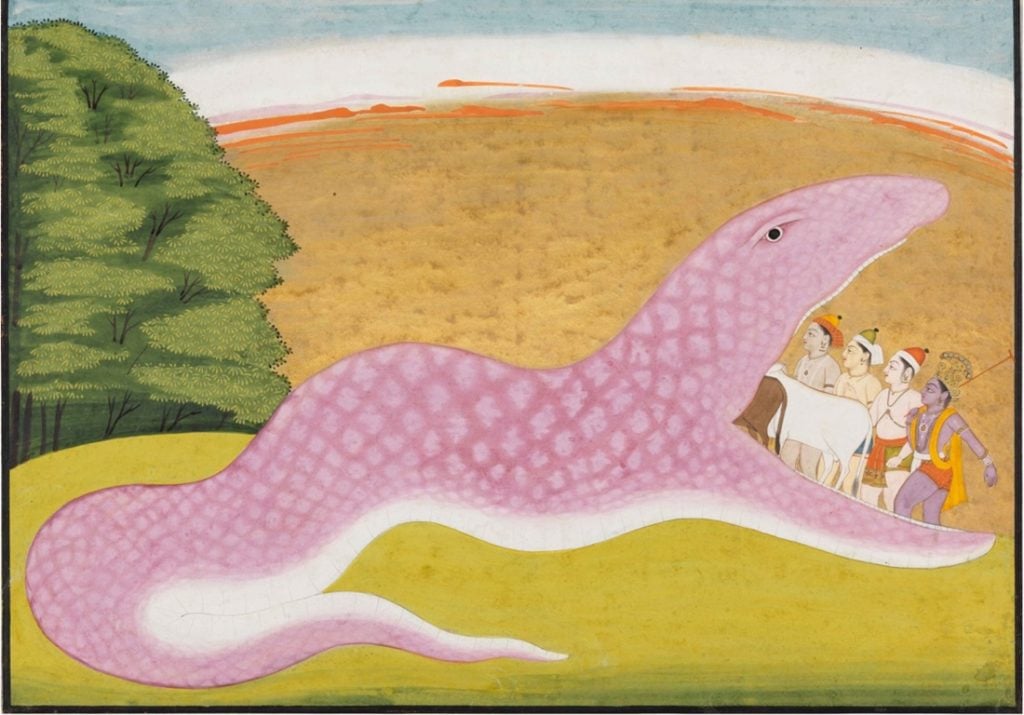
Top-flight Manhattan gallery exhibitions, beyond the auction block.

Major auction houses have more than enough exhibitions, sales, and lectures to fill up your schedule during Asia Week in New York (March 14–22), but that doesn’t mean you should neglect the many top-flight Manhattan galleries that specialize in Asian art. Many have organized scholarly and sharply focused shows exploring a particular medium within the context of a narrow time frame or individual country. Herewith some of artnet News’s top picks for the week.
“Paths to the Divine” explores the vast range of sacred imagery found in the ancient Hindu and Buddhist traditions of India, the Himalayas, and Southeast Asia. Highlights include an 11th-century painted book cover from Tibet, devoted to the Buddhist goddess Tara, and an 18th-century painting depicting the Hindu god Krishna and the demon snake Ugrasura from the sacred Hindu text the Bhagavata Purana.
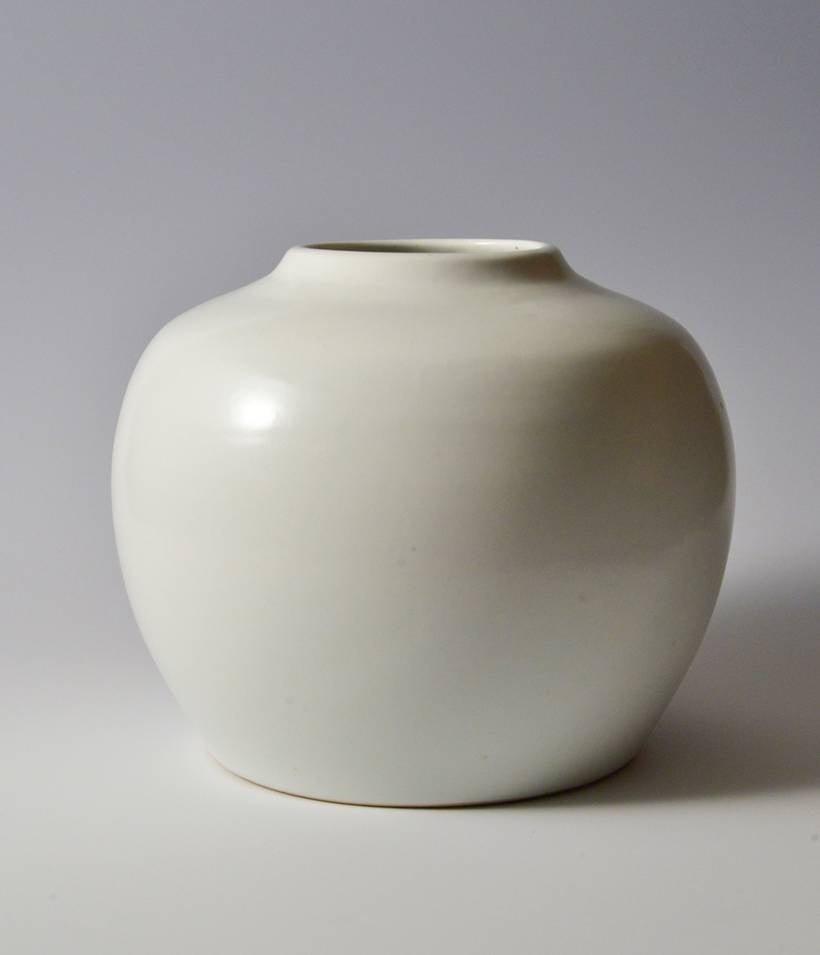
Tomimoto Kenkichi (1886–1963) Faceted white porcelain vase with narrow, upraised neck (1931) Translucent-glazed porcelain
Photo: Yakota Shoichi.
The gallery presents roughly 60 ceramics and paintings in “Japan in Black and White—Ink and Clay,” a joint project with top Japanese dealer Shibuya-Kurodatoen. The exhibit explores the juxtaposition of light and dark, an important concept in Japanese art. The show includes paintings alongside the work of modern and contemporary potters. According to the gallery “rejection of color was a conscious choice [by these potters]. It was also, perhaps, an expression of a desire to overstep the recent past, both aesthetically and politically.”
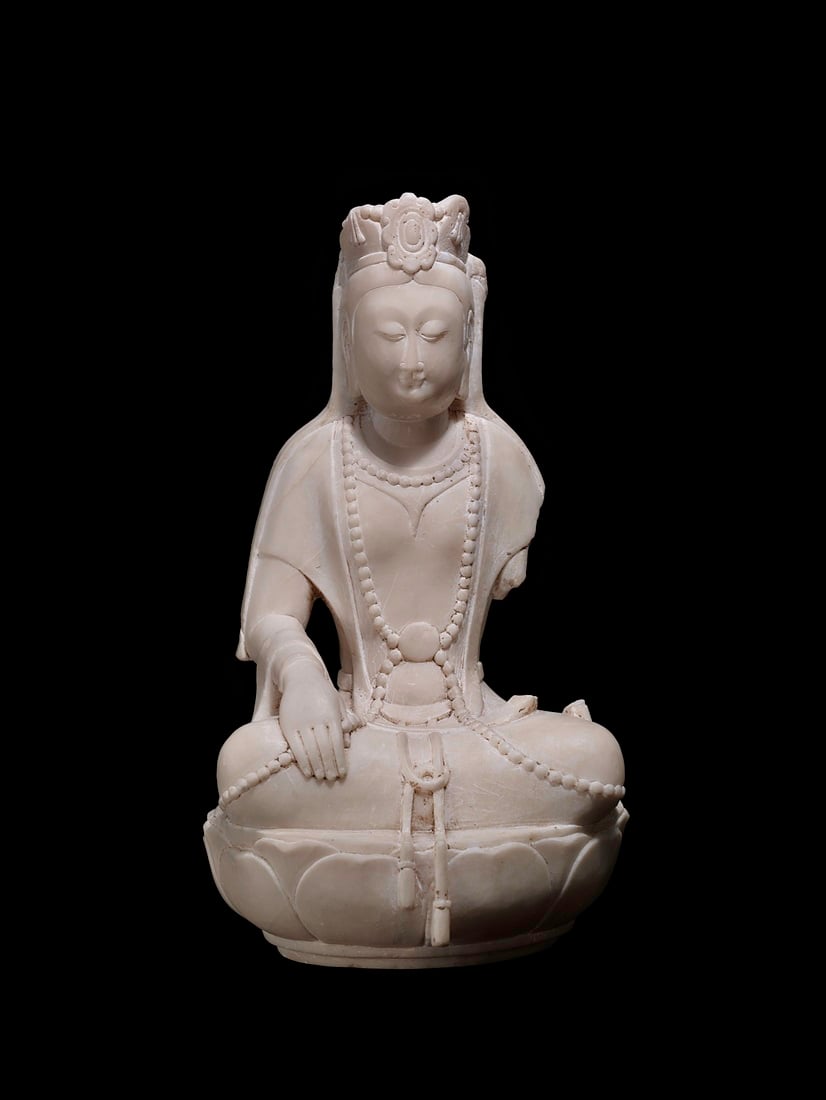
Seated Guanyin Northern Wei, Eastern Wei Dynasty 386–550 CE Photo: Throckmorton Fine Art.
“Celestial Deities: Early Chinese Buddhist Sculptures, CA 500–1100 CE” presents 31 early Buddhist sculptures, many of which were buried for centuries, throughout various parts of China. The works have been carefully cleaned and each piece has been studied by Chinese scholars, with results and photos included in an accompanying catalogue. Gallery owner Spencer Throckmorton acquired all of the works over the past 12 years from collectors and is offering them at prices ranging from US$85,000 to US$135,000, with most in the $35,000 to $75,000 range. By March 17, about a third of the figures had found buyers. The group “suggests the diversity of Chinese Buddhist sculptures from the Northern Wei through the Tang and Song eras, thus from the 6th through the 12th centuries,” says Throckmorton. The scale of the figures varies from the monumental to the intimate, while the material ranges from limestone and sandstone, to white marble, the latter of which was important since it symbolizes purity. “What I think is interesting,” says Throckmorton, “is that these are rescued Buddhas,” that were broken apart during purges in 577 and 842.
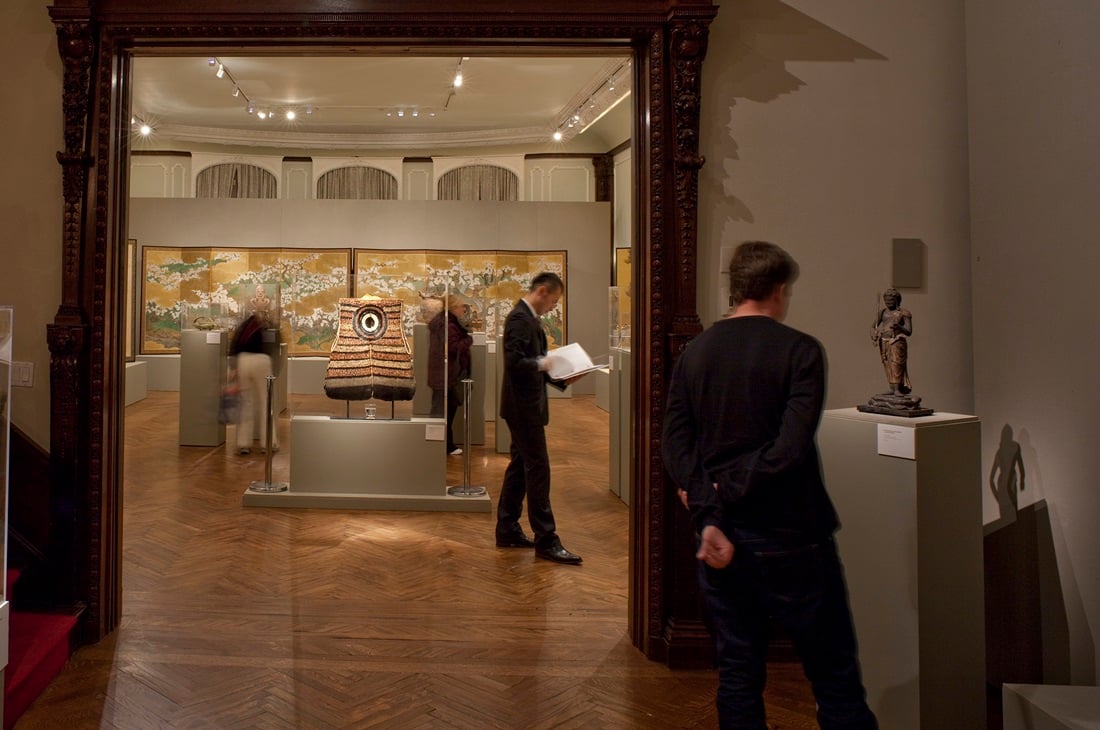
The Japanese Art Dealers Association show at Manhattan’s Ukranian Institute Photo: Steven Tucker.
An exhibition by the Japanese Art Dealers Association (JADA) at the Ukrainian Institute on the Upper East Side brings together five New York dealers who specialize in Japanese art: Erik Thomsen Gallery; Koichi Yanagi Oriental Fine Arts; Leighton R. Longhi; Mika Gallery; and Sebastian Izzard Asian Art. The collaborative show includes works of art grouped by period and school. Highlights include a Buddhist vajra from the 13th century, a pair of 17th-century gold leaf screens of cherry blossoms, and a rare surcoat once worn over royal armor and made of thousands of feathers (below). Most of JADA’s members are also holding separate public exhibits at their galleries. Following the opening weekend of the uptown show, JADA president Sebastian Izzard, said the range of people buying in all areas has increased. Izzard said sales were brisk: “I personally sent invoices to 13 different people—and I’m just one of five exhibitors—predominantly from the US and also from the Far East and Europe.″
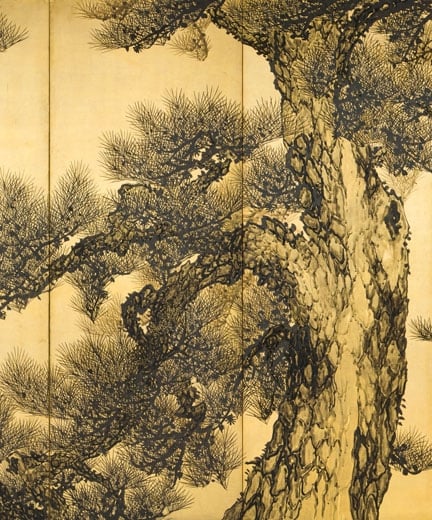
Detail of Pines (ca. 1915) a pair of six-panel folding screens by Suzuki Shonen (1848-1918)
ink on paper with gold leaf. Photo: Erik Thomsen gallery
Thomsen, who is participating in the JADA group show (as well as presenting a separate exhibition at his gallery) said all of the works are featured in his new publication Japanese Paintings and Works of Art, which includes Japanese screens, scroll paintings, bamboo art and gold lacquer boxes. Thomsen said all works are for sale at prices ranging from the low five figures into the seven figures. Among the highlights: Pines (circa 1915) a pair of six-panel folding screens by Suzuki Shonen (1848–1918), ink on paper with gold leaf; and Japanese Alps (1950s) by Takaki Tomizo, a four-panel folding screen.
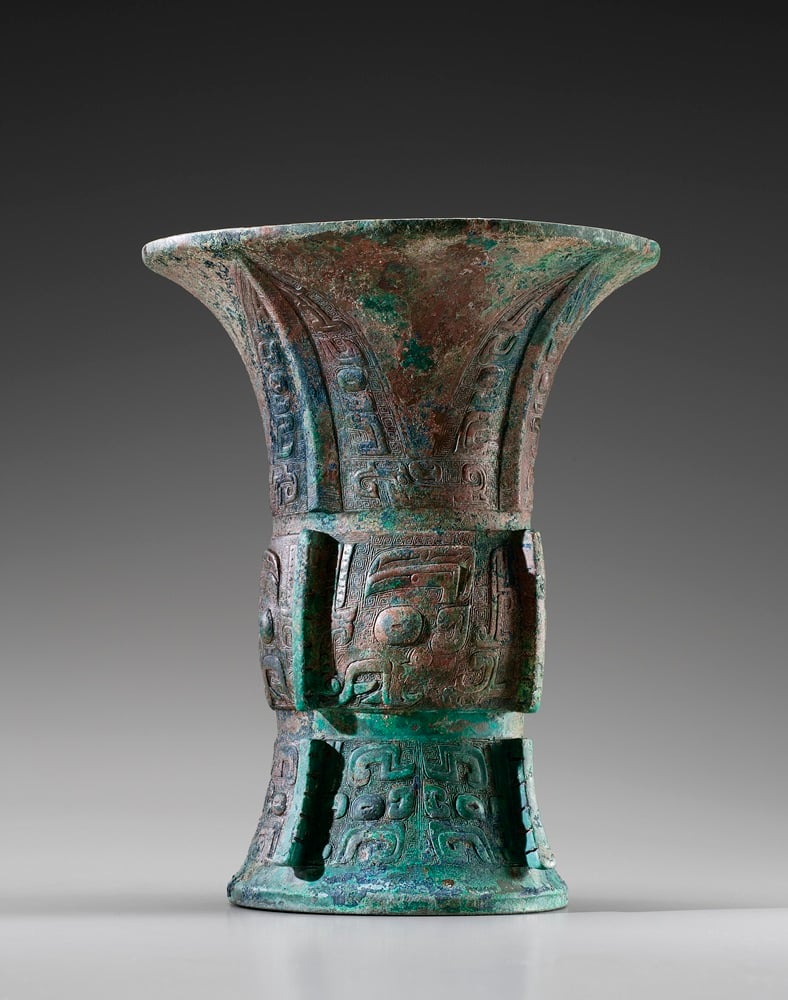
An archaic bronze vessel or Zun, late Shang dynasty (1300–1050 BC) at Belgian dealer Gisele Croes, who is exhibiting at Gagsosian’s Madison Avenue space. Photo: Studio Roger Asselberghs – Frédéric Dehaen.
The renowned Belgian dealer briefly takes up residence in Larry Gagosian’s Madison Avenue space with a selection of works that includes a large bronze horse from the Eastern Han period, formerly in an American collection; archaic bronzes, which have become her signature; and a monumental gilt bronze Guardian from the Ming Dynasty. The latter is an imposing figure was acquired in 1918 by Yamanaka Sadajiro, an important Japanese dealer who set up shop in New York City in 1895 on West 27th street and who counted such collectors as Henry O. Havemeyer and Charles Lang Freer among his clients.
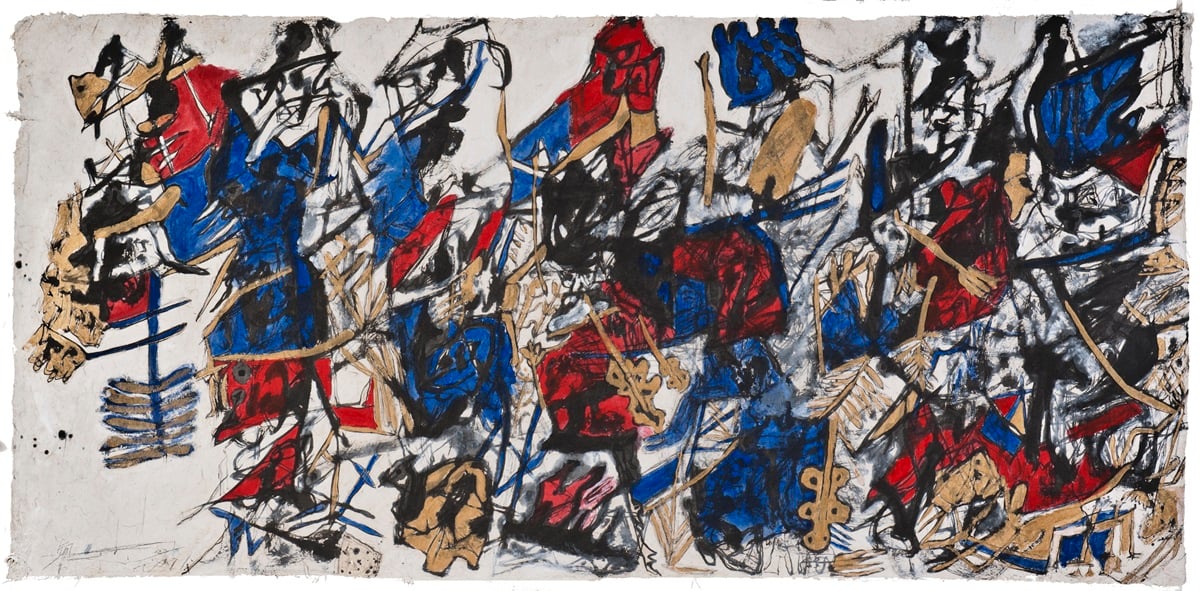
Wei Ligang Flower Banquet (2011)
Ink and acrylic on paper. Photo: Michael Goedhuis Gallery
London’s Michael Goedhuis is working with Mallet at 929 Madison Avenue to present a show of work by Wei Ligang, who has been at the forefront of the contemporary ink painting movement. Wei studied and taught mathematics but moved to Beijing in 1995 to focus on his art. However, his mathematics training has had a palpable effect on his work and his approach to merging calligraphy and painting. Says Goedhuis, “He’s honoring the tradition, honoring the past, but at the same time he’s compelled to break away from it and make a new pictorial language.”
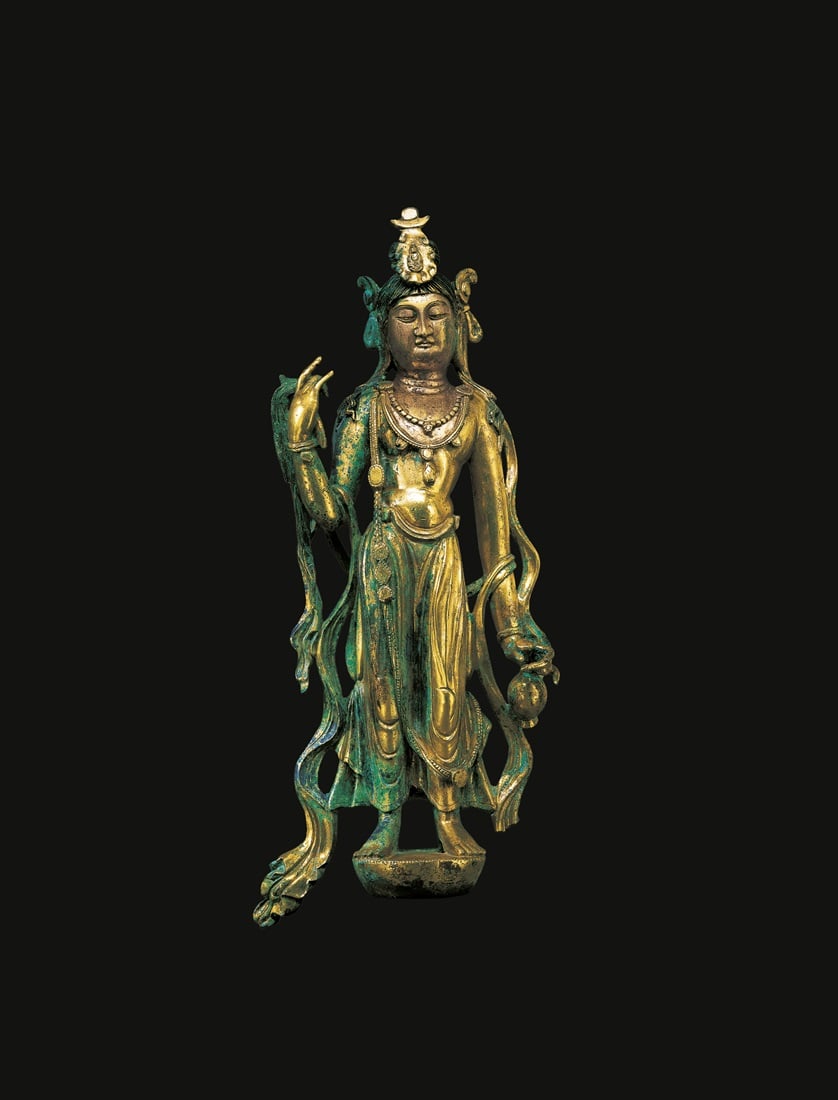
A gilt-bronze figure of the Bodhisattva Guanyin (Tang Dynasty, AD 8th Century)
Photo: Maggie Nimkin.
J.J. Lally is presenting two exhibitions: “Chinese Archaic Bronzes: The Collection of Daniel Shapiro,” and “Ancient Chinese Sculpture: Recent Acquisitions.” The former features ritual vessels cast more than 3,000 years ago that were assembled over the past 30 years by collector Daniel Shapiro, a New York attorney. Cast for use by kings and aristocrats offering wine and food at banquets to honor deceased ancestors, the vessels were the principal art form of ancient China. They are being offered for sale through Lally. The latter show features 14, mostly Buddhist, Chinese sculptures, reflecting the rich sculptural tradition that developed in China in the 2nd century AD when the country first embraced the religion. Among the highlights are two rare Buddhist sculptures from the Tang dynasty (AD 618–907), a gilt bronze figure of Guanyin, and a head of a Buddhist Guardian (Dvarapala) carved of white marble and sporting a fierce expression.